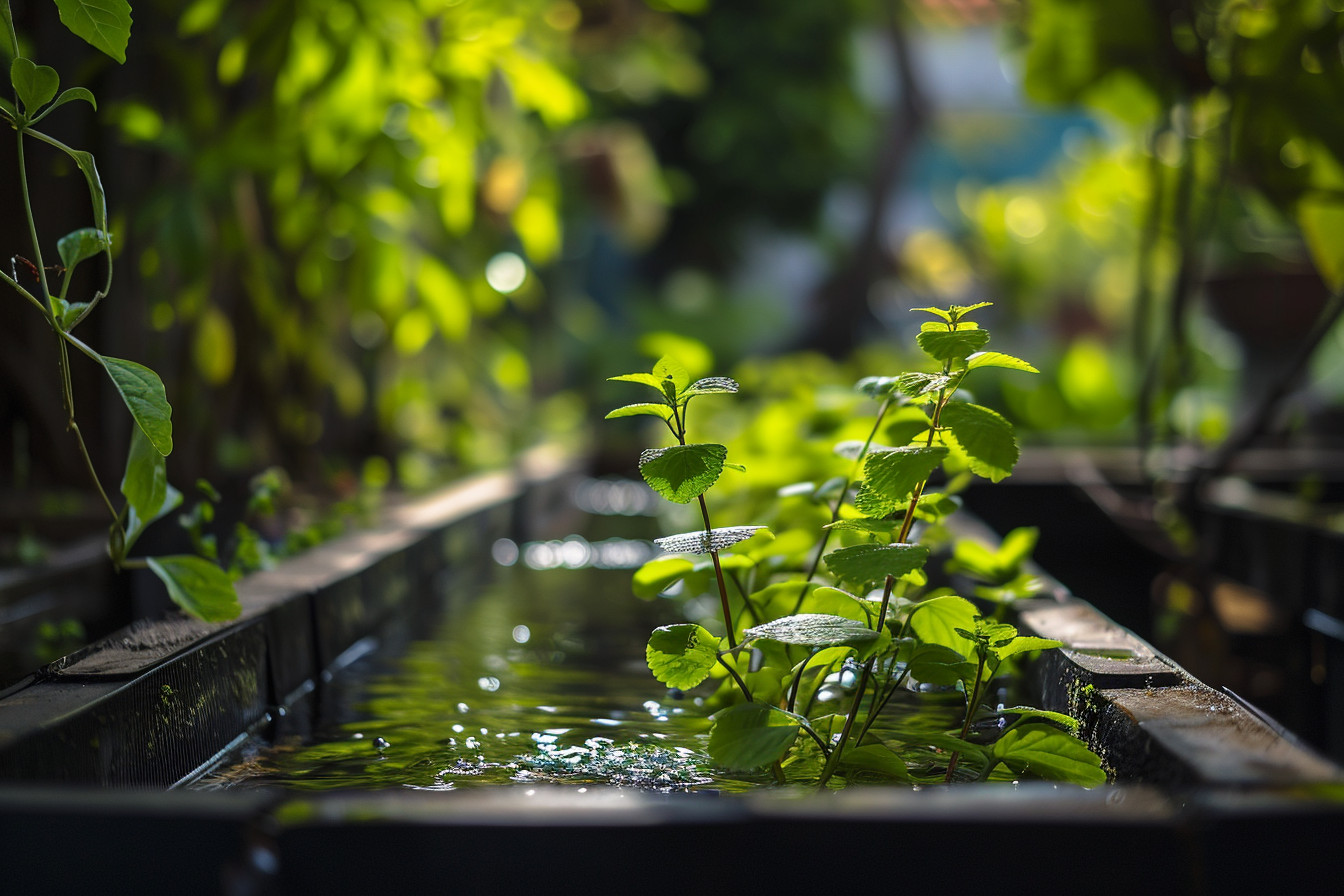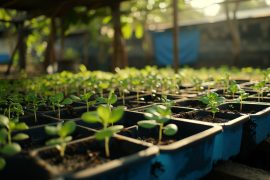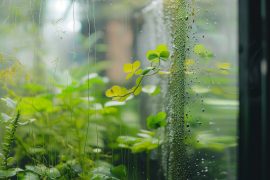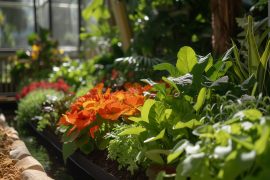Ever stumbled upon the term ‘aquaponics’ and wondered what all the fuss is about? Well, I’ve been diving deep into this fascinating world where fish and plants live in a harmonious cycle. It’s like an eco-friendly dance, with each partner supporting the other.
I’ve always been a fan of getting my hands dirty in the garden, but aquaponic gardening? It’s a whole different ball game. It’s not just about growing food; it’s about creating a sustainable ecosystem right in your backyard. And let’s face it, with our planet’s health on the line, we could all use a greener thumb.
So, why should you care? Because aquaponic systems could be a game-changer for our environment. They use a fraction of the water, no chemical fertilizers, and they could help us grow food more sustainably. Stick around, and I’ll walk you through the ins and outs of this eco-friendly marvel.
The Basics of Aquaponics
Ever find yourself wondering just how an aquaponics system functions? Think of it as an intimate dance between fish and plants, weaving together life cycles in one seamless waltz. I’ve always found it absolutely fascinating – a closed-loop ecosystem where each participant thrives from the other’s existence.
In its simplest form, aquaponics combines aquaculture (that’s fish farming for us laypeople) with hydroponics (cultivating plants in water). But here’s the twist – it does so in a symbiotic environment. The fish produce waste, which sounds kind of gross, right? But stay with me. This waste isn’t waste at all in an aquaponics setup. It’s the gold dust that plants feast on – converted by bacteria into nitrates, acting as a natural fertilizer.
The plants play their part too. They take up these nutrients, and in the process, they purify the water, which cycles back clean to the fish. It’s a perpetual give-and-take that provides both parties with what they need to flourish. As a gardener and nature lover, this strikes a chord with me. It feels like tapping into the very essence of Mother Nature’s connectedness.
But let’s break it down even further. Here’s the technical bit simplified:
- Fish are raised in tanks
- Their waste is broken down by nitrates
- This nutrient-rich water is then pumped to the plant beds
- Plants take up nutrients, filtering the water
- Clean water is returned to the fish tanks
This process mimics a natural wetland’s functional ecology. What’s truly breathtaking about aquaponics is its efficiency. It uses a fraction of the water needed in traditional farming and doesn’t require soil at all.
You might think such a sophisticated system is a modern invention. Far from it. There’s evidence that ancient civilizations had similar methods, but we’ve refined it, blending old wisdom with new techniques.
And while I’m no history buff, I’ve got to admit there’s something quite magical about tapping into age-old practices and realizing how ahead of their times our ancestors really were.
How Aquaponic Gardening Works
Imagine stepping into your backyard and stumbling upon a serene oasis, the gentle sound of water circulating through a garden that thrives without a speck of soil. That’s the peaceful reality of an aquaponic system. For me, working with aquaponics is as much a journey into tranquility as it is about gardening.
Aquaponics melds hydroponics (growing plants in water) with aquaculture (raising fish), crafting a closed-loop system where waste isn’t waste but a treasure for another part of the system. I like to think of it as a dance between the species, each step meticulously in sync with the other.
Here’s a straightforward glimpse at the process:
- Fish live in tanks, and through their daily activities, they produce waste.
- This waste is then channeled to a biofilter, where bacteria do their magic, converting ammonia from the waste into nitrates.
- These nitrates, harmful to fish but a delicacy for plants, flow to grow beds where plants eagerly absorb them.
- As these hungry plants take up nutrients, they simultaneously cleanse the water.
- This purified water cycles back to the fish, and the process starts anew.
My hands-on experience has taught me that the secret sauce to an effective aquaponic garden lies in the symbiotic relationship. When you get the balance right, the results are astounding. Plants grow faster, fish are happier, and as a bonus, you end up using about 90% less water compared to traditional gardening.
Did you know that ancient civilizations had their rendition of aquaponics? The Aztecs and Chinese were onto something when they set up their chinampas and rice-fish paddies, systems that hinted at modern aquaponic techniques. They knew something fundamental about working with nature, not against it – an ethos that’s echoed in every bubbling aquaponic system today.
I think of these historical techniques not just as chapters from gardening books but as narratives that propel our understanding of sustainable practices. They remind us that the principles behind aquaponics have been tried and tested through time; we’re just refining and optimizing them for today’s world.
Advantages of Aquaponic Gardening
Aquaponic gardening is truly a dance between elements, and as I delve deeper into its benefits, I’m routinely struck by its gentle footprint on Mother Earth. Let me walk you through some of the core advantages that make this method stand out in a world where sustainable practices are more critical than ever.
Sustainability and Resource Conservation stand at the forefront of aquaponic gardening’s benefits. Unlike traditional farming, aquaponics doesn’t deplete the soil and avoids the use of chemical fertilizers. I’ve read studies showing how aquaponics can reduce water usage by up to 90% compared to conventional methods. And trust me, as someone deeply concerned about our planet’s future, that statistic alone resonates with me profoundly.
By reusing water within the system, it’s a shining example of conservation that strikes a chord with environmentally-inclined gardeners like myself. Imagine the relief of our water bodies from agricultural runoff, all thanks to a beautiful closed-loop system that keeps everything contained and clean.
From an educational standpoint, aquaponics provides a fantastic learning opportunity. It’s common knowledge that our education system could use more hands-on, practical learning experiences. Aquaponic systems can be set up in schools, allowing kids to observe the nitrogen cycle firsthand, learning about symbiotic relationships in ecosystems, and developing an invaluable connection with the source of their food.
Organic Produce is another term that’s often thrown around these days, but with aquaponics, it’s a reality. The system’s very design promotes organic growth, removing the need for pesticides or herbicides that often find their way into our meals when using other growing methods. My own experiences with harvesting aquaponic vegetables have consistently yielded vibrant, nutritious, and chemical-free produce that tastes just as good as it looks.
Let’s not forget the reduced carbon footprint that comes with aquaponic systems. Transport miles for food are cut down significantly when communities adopt local aquaponic farms. There’s something deeply satisfying about having a shorter farm-to-table journey, knowing that the lettuce in your salad has traveled mere yards instead of hundreds of miles to your plate.
Reducing Water Usage in Aquaponics
I’ve always found a deep sense of peace tending to my garden. There’s just something about the quiet harmony between the plants and the gentle sound of water that washes away the day’s stress. Speaking of water, let’s dive into how aquaponics is revolutionizing the way we think about water conservation in gardening.
For starters, conventional gardening requires a significant amount of water – something that always troubled me given our growing concerns about water scarcity. Then I stumbled upon aquaponics. 90% Less Water Usage – that’s a figure you can’t ignore. Especially when you learn that aquaponics systems circulate water in a closed-loop, drastically reducing the usage compared to traditional methods.
In my experience, visualizing this savings can be pretty remarkable. Imagine filling up a swimming pool for your traditional garden versus just a bathtub for your aquaponic setup – that’s the kind of difference we’re talking about.
| Gardening Technique | Water Usage Comparison |
|---|---|
| Traditional | Swimming Pool |
| Aquaponic | Bathtub |
One of my friends, an ingenious gardener and a bit of a tinkerer, showed me how she monitors her aquaponic system for even greater efficiency. There’s an exhilarating cleverness to fine-tuning these systems – sensors for water levels, temperature controls, and even solar-powered pumps. It’s like bringing the elegance of nature and the innovation of technology into a graceful dance.
As for the water itself, it’s not just about quantity but quality. The water used in aquaponics has to be clean enough for fish to thrive. In turn, this means the water cycled through to the plants is teeming with nutrients. There’s no runoff of fertilizers into local water bodies, preserving our streams and rivers.
When thinking about the broader environment, it seems like a no-brainer. Aquaponics isn’t just a personal or collective win for gardeners regarding water conservation; it’s a victory for our planet. The less water we pull from our precious resources, the more we can keep natural ecosystems intact.
Eliminating Chemical Fertilizers with Aquaponics
Throughout my years digging into the earth and nurturing my garden, I found a profound peace in the simple act of connecting with the soil. Yet, the gardener in me felt a twinge of guilt every time I reached for a bottle of chemical fertilizer. That all changed when I embraced aquaponics. This fusion of fish farming with plant cultivation creates a symbiotic environment where the need for chemical inputs is virtually erased from the gardening equation.
Let me paint a picture of an aquaponic setup. The fish provide nutrients through their waste, and the plants, in turn, filter and clean the water, which is then recirculated back to the fish. It’s a harmonious loop, echoing the balance of nature’s own ecosystems.
By sidestepping chemical fertilizers, aquaponics not only sustains itself but also nurtures my sense of harmony with nature. These tranquil gardens are more than just a source of fresh produce; they’re a living affirmation of a more sustainable coexistence with our environment. Our hands, usually marred by the chemicals and dirt of traditional gardening, can now move through water and greenery, literally feeling the pulse of a balanced ecosystem.
In my own aquaponic venture, I saw remarkable transformations. With my sensors and solar-powered pumps diligently maintaining the system, the health of my leafy greens skyrocketed. I remember how the kale and herbs flourished, untainted by synthetic compounds, their roots suspended in water, drawing all their sustenance from our finned friends below.
For those still new to the concept, imagine a fish tank and a garden bed in a mutually beneficial partnership. As fish waste accumulates, rather than being a toxic byproduct, it’s converted by beneficial bacteria into nitrates – essential plant nutrition. Now picture that, over time, as the garden flourishes without a hint of artificial fertilizer. It’s pretty remarkable, and it’s also a model of efficiency we rarely find in our modern agricultural practices.
Educationally, one could venture back to the ancient Chinampas of the Aztecs or the floating gardens of Bangladesh for a historical perspective. Systems akin to aquaponics have deep roots, thriving long before industrial farming introduced synthetic chemicals to the mix.
Growing Food Sustainably with Aquaponics
Throughout my years of gardening, I’ve found a profound peace in watching a seed transform into a bountiful plant. The gentle hum of an aquaponics system in action hints at a deeper harmony with nature—one I sense every time I step into my green haven. It’s not just about growing food; it’s about cultivating life in a way that respects and replenishes the earth. Aquaponics embodies this ethos, marrying the ancient wisdom of cyclic resource use with modern sustainability demands.
To dive into the educational component, aquaponics is essentially a closed-loop system. Fish live in water tanks and their waste provides nutrients for the plants. The plants, in return, filter and purify the water that cycles back to the fish. It’s a seamless dance between different forms of life, one that doesn’t need the introduction of harmful chemicals to thrive. For those unfamiliar, it may sound complex, but aquaponics is surprisingly accessible once you grasp the basics.
One of the most compelling stories I’ve encountered was during a visit to a local school that implemented an aquaponics system. The children, initially unaware of how their food grows, became avid gardeners and eco-ambassadors. They learned about the nitrogen cycle—how fish waste is broken down by bacteria into nitrates that plants use to grow. Such projects demonstrate the power of hands-on learning and the ripple effect it can have on communities.
Aquaponics isn’t just a technical process—it’s an intimate connection with the lifecycle of the natural world. Each time I feed the fish in my home system, I’m reminded of the unseen world of microbes in the water, doing their essential work. Witnessing the peas climbing and the tomatoes bursting with color is a daily dose of storytelling, where nutrients and care are transformed into the food on my table.
Integrating aquaponics into homes and schools isn’t merely about food production. It’s a step toward mental and physical wellness, a live demonstration of the serene balance that nature can achieve. As a gardener and an educator, I’ve seen firsthand how the simplicity of aquaponics can ignite curiosity and foster a space where tranquility meets productivity—a space that genuinely reflects the essence of sustainable living.
Final Thought
Wrapping this up I’ve gotta say aquaponic gardening’s more than just a trend—it’s a game-changer for our planet. It’s a solid step towards sustainable living that does wonders for both our plates and our environment. Seeing those kids light up at the school’s aquaponic system really drove home the bigger picture for me. It’s not just about the here and now; it’s about shaping a greener mindset for generations to come. So if you’re looking to dig into gardening with a side of eco-consciousness aquaponics might just be your perfect match.








